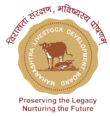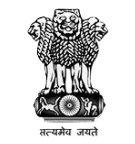Fodder Production Program
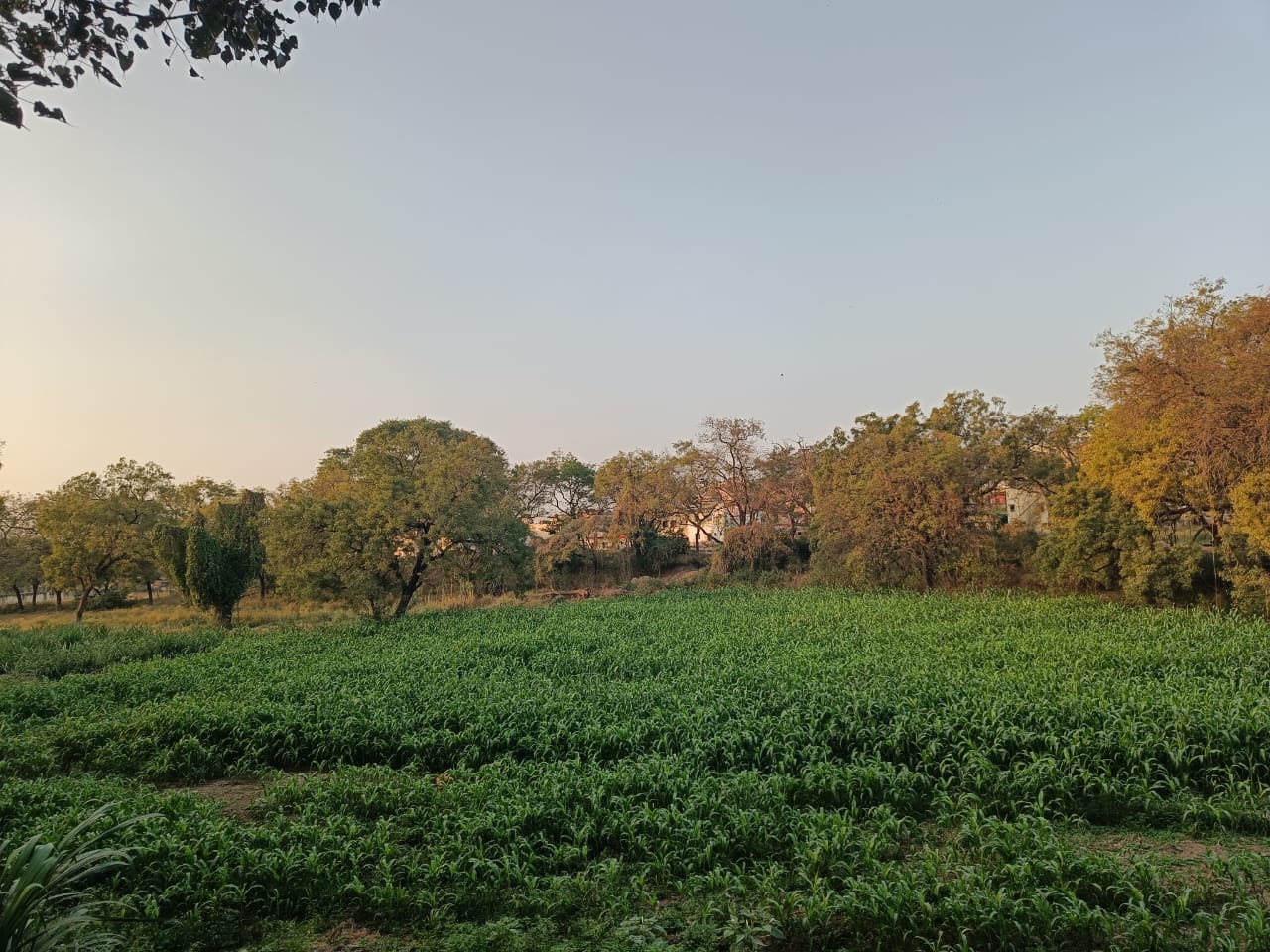
The Maharashtra Livestock Development Board (MLDB) emphasizes the importance of quality fodder for sustainable livestock development. To address the fodder shortage and promote livestock growth, MLDB has initiated various fodder production programs.
Objectives
- Improve Fodder Availability: Increase the availability of quality fodder for livestock, reducing scarcity and promoting healthy animal growth.
- Enhance Fodder Quality: Promote the production of nutritious fodder, enriched with essential minerals and vitamins, to improve livestock health and productivity.
- Support Sustainable Livestock Development: Foster sustainable livestock development by encouraging farmers to adopt environmentally friendly fodder production practices.
- Improved Livestock Health: Access to quality fodder enhances livestock health, leading to better productivity and profitability for farmers.
- Increased Farmer’s Income: By promoting fodder production and marketing, MLDB helps farmers generate additional income, improving their livelihoods.
- Sustainable Livestock Development: The board’s initiatives encourage environmentally friendly fodder production practices, contributing to sustainable livestock development in Maharashtra.
Sr. No. | Types of Fodder | Fodder Varieties | Information | Photo |
1. | Napier | Napier grass (also known as Pennisetum purpureum) is a tropical perennial grass that is widely cultivated as forage for livestock. It is highly valued for its fast growth, high yield, and nutritional content, making it an excellent choice for feeding animals like cows, goats, and sheep. Napier grass is also known as elephant grass in some regions due to its tall, robust growth and large leaves. | 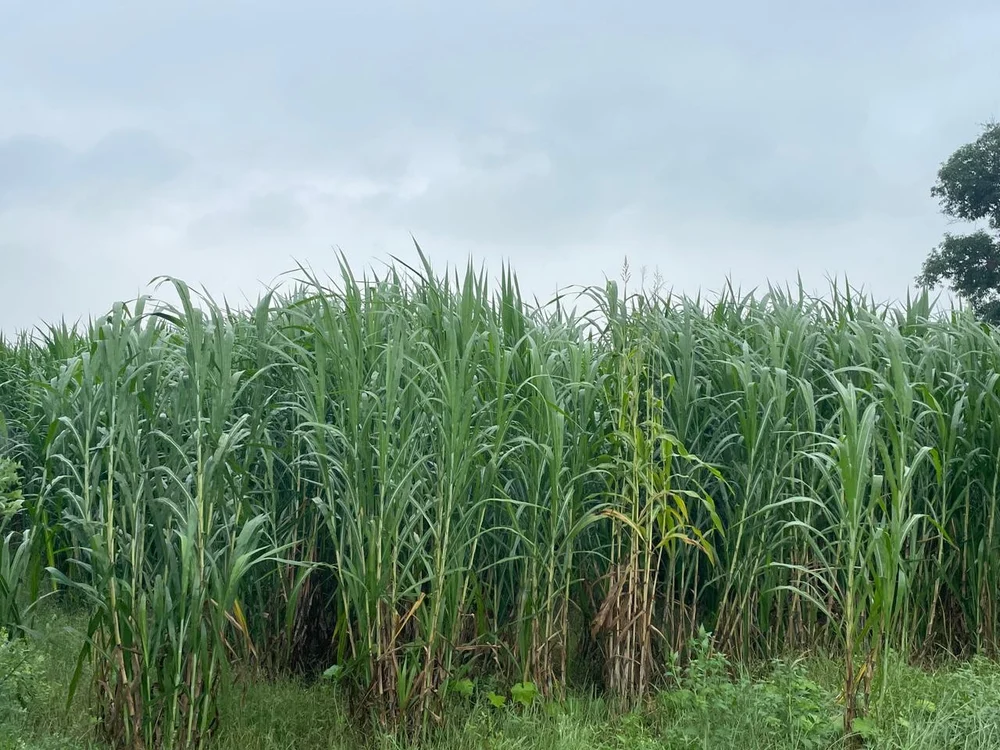 | |
2. | Sorghum | The grain is used as food by humans, while the plant is used for animal feed and ethanol production.Sorghum is a large stout grass that grows up to 2.4 metres (7.9 ft) tall. It has large bushy flowerheads or panicles that provide an edible starchy grain with up to 3,000 seeds in each flowerhead. | 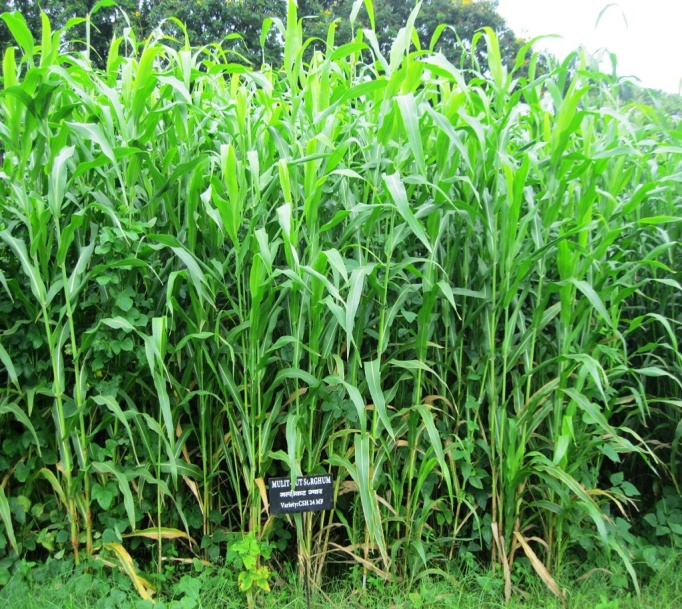 | |
3. | Corn | Corn fodder refers to the parts of the corn plant (Zea mays) that are used as feed for livestock, particularly for cattle, sheep, goats, and sometimes horses. It includes the stalks, leaves, and husks of the corn plant, as well as any leftover parts after the grain has been harvested. Corn fodder is typically used in the form of silage (fermented fodder) or dry hay, providing valuable nutrients to animals, especially during the winter months or in areas where fresh pasture might not be available. | 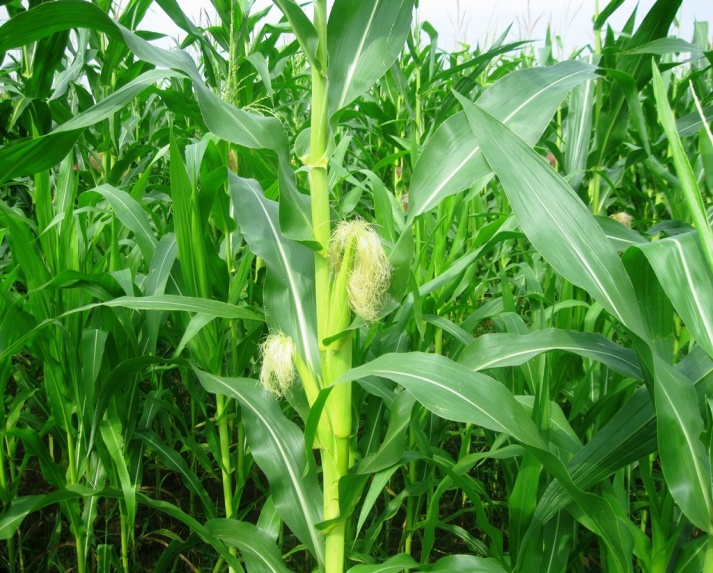 | |
4. | Oats | Oats fodder (Avena sativa) is a type of nutritious feed for livestock, made from the leaves and stems of the oats plant.Oat is one of the most important cereal fodder crops of rabi season in North, Central and West Zone of the country. The introduction of oat hay in India of recent origin. | 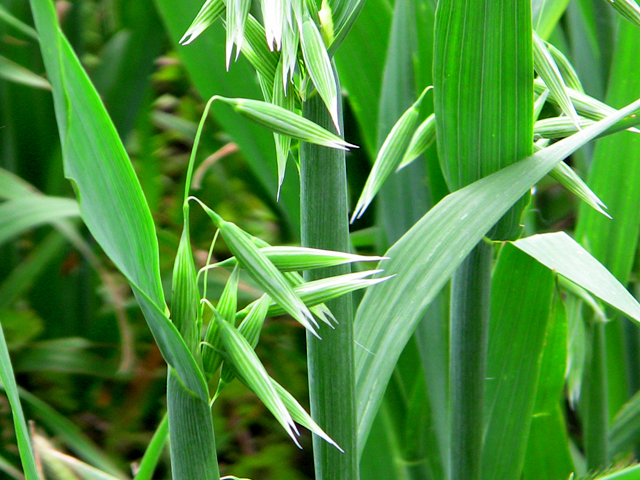 | |
5. | Berseem | | 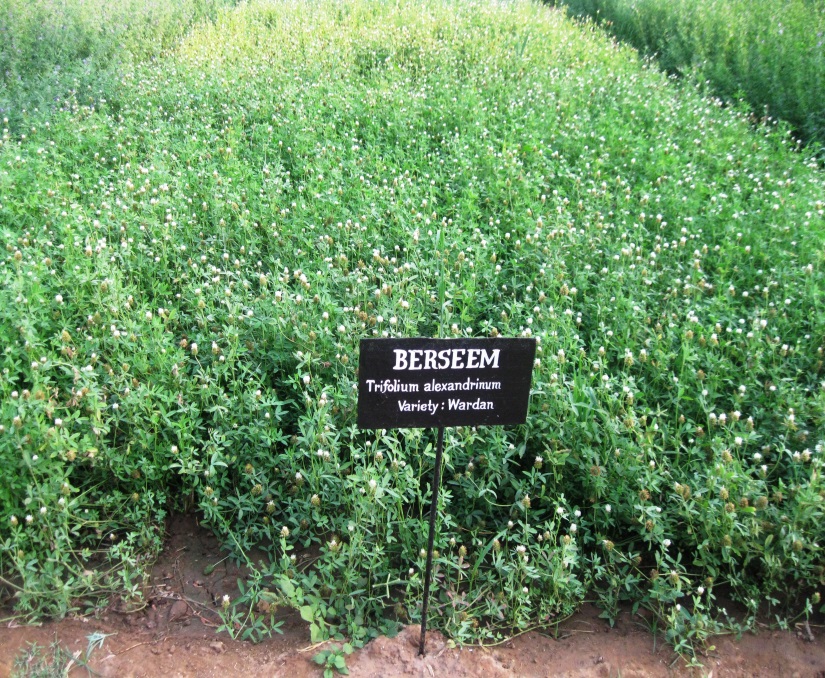 | |
6. | Lucerne | Lucerne fodder (Medicago sativa) is a type of nutritious feed for livestock, made from the leaves and stems of the lucerne plant.Lucerne also known as "alfalfa" or "rijka" in northen India is a protein rich fodder and considered as "queen of fodder crop".Being a deep-rooted crop, Lucerne extracts water from the deeper zone of the soil. It can be grown both as annual as well as perennial crop. This crop may supply green fodder continuously for 3 to 4 years from the same field as perennial crop. It yields nutritive and palatable fodder, which contains about 15 to 20% crude protein with 72% digestibility (dry weight basis) and high amount of vitamins A, B, and D. Since, Lucerne is a rich feed; it should be used only in small quantities. | 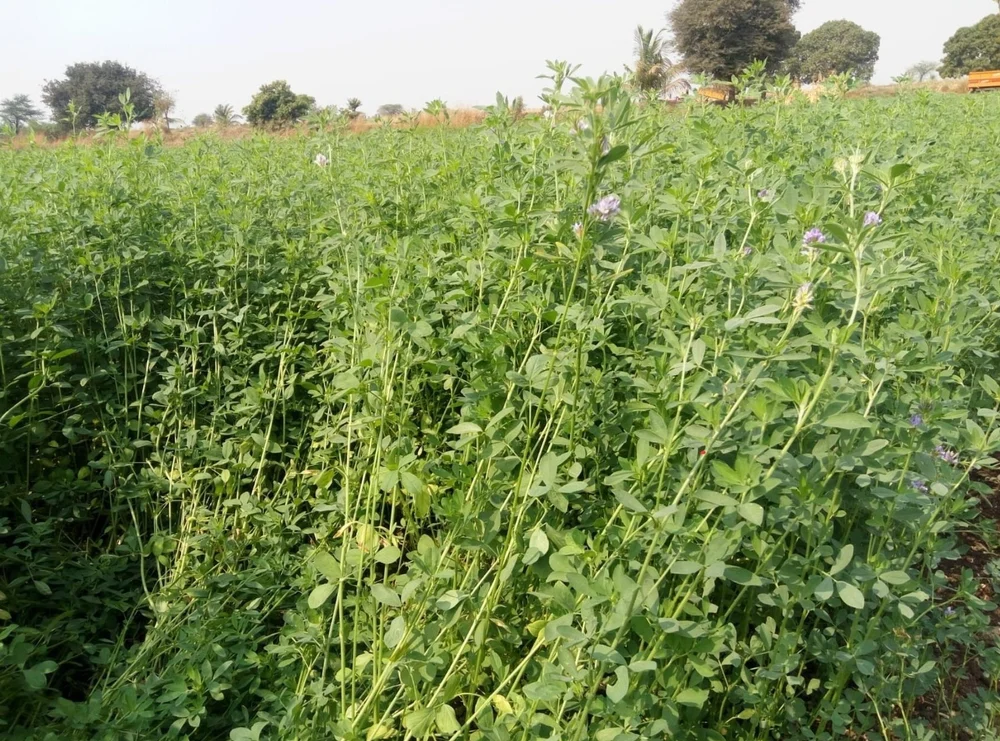 | |
7. | Guinea | Guinea grass (Panicum maximum Jacq.) is a perennial grass that is used as fodder for cattle, goats, and sheep. It's a nutritious, fast-growing grass that's highly palatable to livestock. It is considered to be the most valuable fodder plant. It has a high leaf stem ratio which makes it most palatable grass to livestock. It remains green until late winter. It is cultivated throughout the country for green nutritious fodder. When it is leafy and young, it has 10 % crude protein but it falls rapidly with delayed harvesting. This can be prepared as hay or silage. It grows naturally in open grasslands, usually under or near trees and shrubs and along riverbanks. |  |
